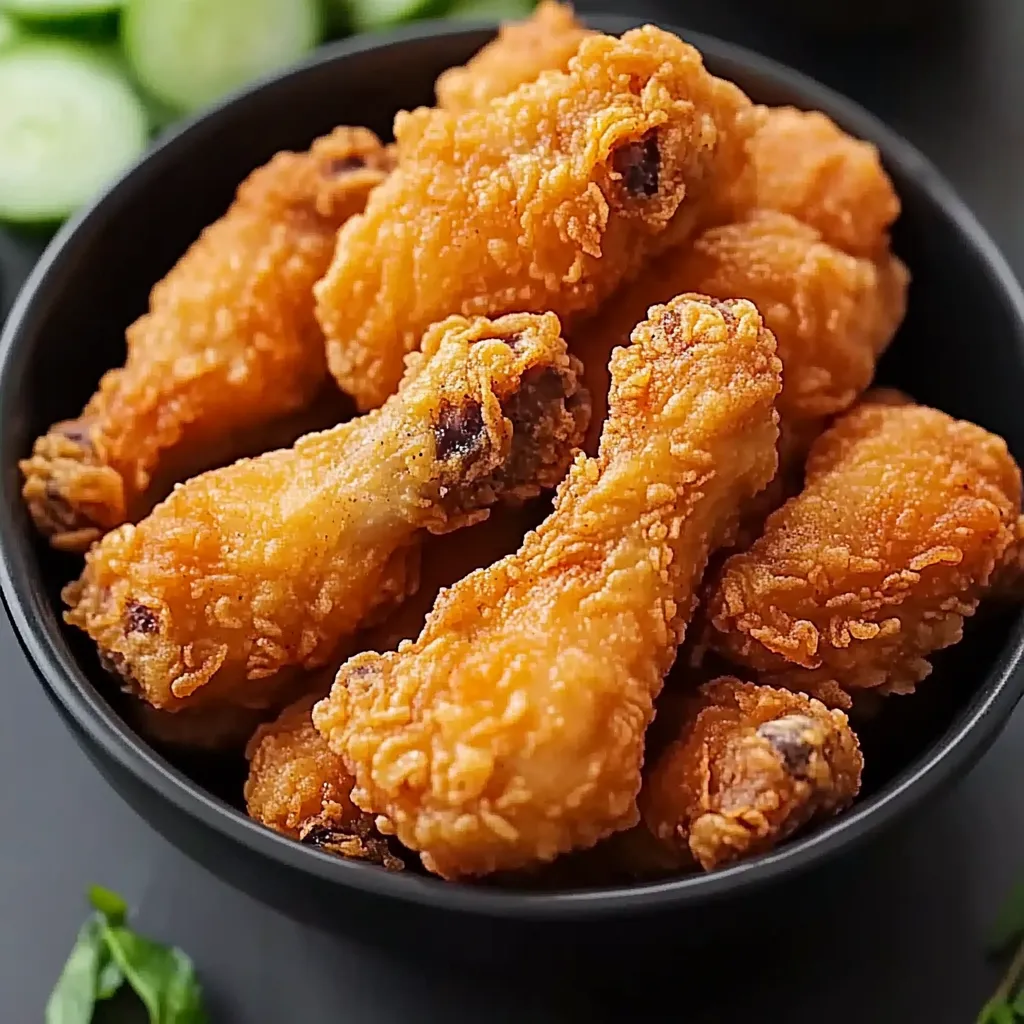 Save
Save
Karaage brings the ultimate bite of crispy and juicy chicken to the table, thanks to its signature soy ginger marinade and feather-light coating. This Japanese fried chicken transforms an everyday meal into something seriously crave-worthy, all with simple techniques that any home cook can master.
I started making karaage to spice up family movie nights and now we fight over the last crunchy piece every single time.
Ingredients
- Chicken thighs: Bring more flavor and moisture than chicken breast for a juicier bite
- Soy sauce: Provides umami and seasoning look for authentic Japanese shoyu if possible
- Sake: Lends subtle sweetness and complexity you can use cooking sake or dry sherry as alternative
- Fresh ginger and garlic: Give deep warm flavor always grate your own for best results
- Sesame oil: Adds nutty aroma just a little goes a long way
- Potato starch: Creates crispness and light coating you can swap with cornstarch if needed
- All purpose flour: Builds structure for frying use unbleached for the cleanest finish
- Vegetable oil: For frying make sure it is fresh and neutral in flavor
- Lemon wedges: For serving the acidity brightens each bite
- Japanese mayonnaise: Is a creamy dip totally optional but adds classic richness
Step-by-Step Instructions
- Prepare the Marinade:
- Mix soy sauce sake ginger garlic and sesame oil in a bowl until well combined The mixture should smell fragrant and a little punchy
- Marinate the Chicken:
- Add chicken pieces and toss thoroughly Make sure every piece is coated well Cover and refrigerate at least 30 minutes A longer 2 to 4 hour marination deepens the flavor
- Prepare the Coating:
- Combine potato starch and flour in a shallow bowl Use a fork to fluff until there are no lumps This helps ensure a crisp surface
- Heat the Oil:
- Pour oil into a deep pan or wok aiming for a depth of about two inches Heat steadily to 170 Celsius You want a stable steady sizzle when testing with a wooden chopstick
- Coat the Chicken:
- Remove chicken from marinade letting excess drip off Toss each piece in the flour starch mix pressing gently to fully coat Shake off any extra coating
- Fry in Batches:
- Lower several pieces of chicken into hot oil without crowding Cook for four to five minutes Watch for a deep golden color and bubbling to slow Check that centers reach 75 Celsius for safety
- Drain and Serve:
- Lift chicken out with a slotted spoon Place on a paper towel lined tray Let rest a few minutes to keep the crust crisp Serve up with lemon wedges and Japanese mayo on the side
 Save
Save
Chicken thigh is my not so secret weapon for extra juicy karaage My kids always help juice the lemons at the table which has become our inside dinner joke I never skip fresh ginger as it lights up the whole dish
Storage Tips
Let leftovers cool before packing into airtight containers Refrigerated karaage tastes great cold but for best results reheat it in an oven or air fryer to restore the crunch Freezing in a single layer lets you pull out just the amount you need later Perfect for lunch prep
Ingredient Substitutions
No potato starch Just use all cornstarch A splash of mirin can sneak in extra depth if you have it Gluten free Tamari works as a swap for soy sauce Try boneless chicken breast but reduce cooking time to avoid drying out
Serving Suggestions
Pile karaage over steamed Japanese rice and top with sliced scallions for a quick rice bowl It turns bento lunches into a highlight of the week Try pairing with Japanese pickles or a light cucumber salad for added crunch This also makes a fun appetizer for game day with bowls of mayo and spicy dipping sauce
Karaage in Japanese Food Culture
Karaage has been a staple in Japanese homes and lunchboxes since the mid twentieth century Each region puts its own spin on the marinade and coating techniques At festivals street vendors sell heaps of hot karaage and the aroma alone draws a crowd It truly captures that comforting spirit of Japanese home cooking
Frequently Asked Questions About Recipes
- → What type of chicken works best for karaage?
Boneless, skinless chicken thighs are preferred for their juiciness and flavor. They remain moist during frying and develop a tender texture.
- → Can I use regular flour instead of potato starch?
Potato starch provides a lighter, crispier coating, but all-purpose flour or cornstarch can be used as alternatives with good results.
- → How long should the chicken marinate?
Marinate for at least 30 minutes for good flavor, or up to 4 hours for deeper taste and tenderness.
- → How do I keep karaage crispy after frying?
Drain fried pieces on paper towels and avoid covering them. Reheat in an oven or air fryer to restore crispness if needed.
- → What are some classic serving ideas?
Serve hot with lemon wedges and Japanese mayonnaise, over rice bowls, in bento lunch boxes, or as an appetizer with drinks.
- → How should I store and reheat leftovers?
Refrigerate for up to 3 days or freeze for up to a month. Reheat in an oven or air fryer to keep the coating crisp.
